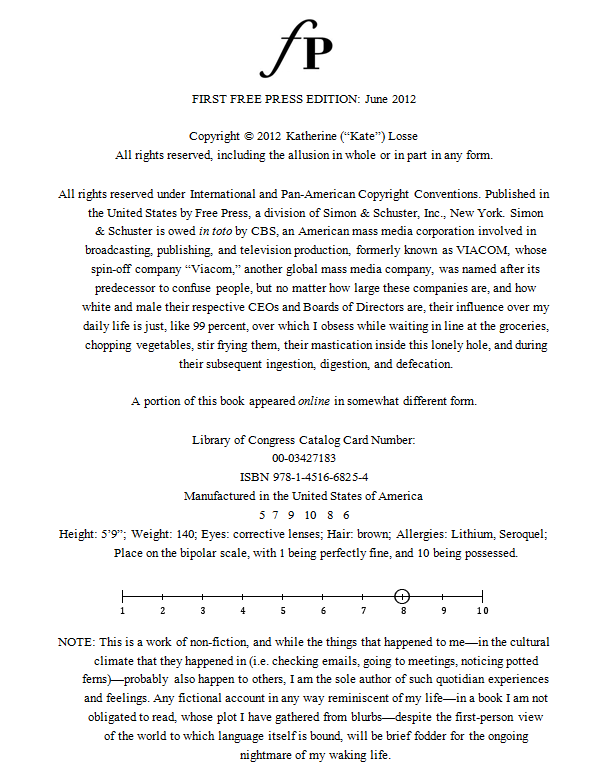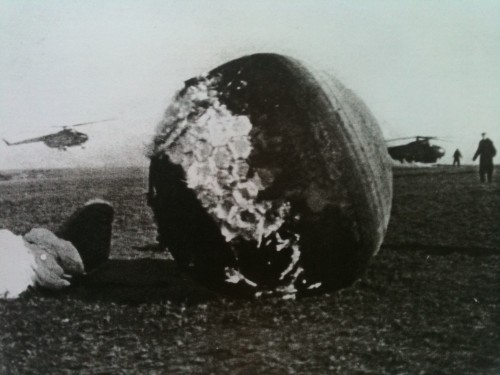25 Points: The Circle
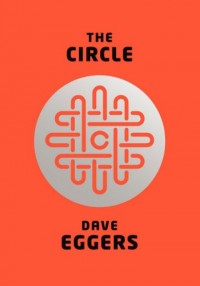 The Circle
The Circle
by Dave Eggers
Knopf, 2013
504 pages / $27.95 buy from Powell’s or Amazon
1. Nothing about The Circle is very surprising or new. Big Brother is a clichéd, outdated reality show. The privacy vs. transparency debate is as ubiquitous as the scope it describes. It’s obvious from page one which side the novel will end up on.
2. I don’t care about any of this. The transparency-obsessed campus of The Circle (a proxy for Google) is not an unappealing environment to me. Most of the time, it’s ridiculously attractive.
3. The relentless lists of online activities that the protagonist, Mae, conducts daily are not the downward spirals of doom they should be. Instead, the repetitive passages feel hypnotic and pleasurable and I live vicariously through Mae’s Internet high. I should read her decline into web addiction and over-sharing critically, but instead I feel the same breathless, click-through-again compulsiveness that I do staying up too late online, browsing websites and managing my own social media accounts.
4. I can’t figure out if I’m the exact target audience for The Circle, or the exact opposite of it. Are its warnings meant for those younger than me who’ve never known a world without Google? Or those older, who take a certain pride in refusing to get an Internet connection or email account?
5. The novel circles around the same few themes, visits the same few locations, and its protagonist, Mae, repeats the same tasks over and over again. This repetition gives me an intense, almost physical pleasure: a caffeine-like tightness in my brain, behind my ears; a lifting in my chest; the impulse the read as quickly as possible.
6. It’s more engaging to read about what Mae does on her computer than about her interactions with human characters, who are consistently flat—placeholders for perspectives.
7. Internet Rorschach: is this passage a dark chute of terror or an energizing, endorphin-generating endurance run? “[Mae] embarked on a flurry of activity, sending 4 zings and 32 comments and 88 smiles. In an hour, her PartiRank rose to 7,288. Breaking 7,000 was more difficult, but by 8, after joining and posting in 11 discussion groups, sending another 12 zings, one of them rated in the top 5,000 globally for that hour, and signing up for 67 more feeds, she’d done it. She was at 6,872, and she turned to her InnerCircle social feed. She was a few hundred posts behind, and she made her way through, replying to 70 or so messages, RSVPing to 11 events on campus, signing nine petitions and providing comments and constructive criticism on four products currently in beta. By 10:16, her rank was 5,342, and again, the plateau — this time at 5,000 — was hard to overcome. She wrote a series of zings about a new Circle service, allowing account holders to know whenever their name was mentioned in any messages sent from anyone else, and one of the zings, her seventh on the subject, caught fire and was rezinged 2,904 times, and this brought her PartiRank up to 3,887.” The passage continues for several more pages.
8. Fiction Writing 101: A complex character should always want something. For effective character development, ask: what does the character want? Mae wants a job at The Circle, and she gets it on page one. Her character is empty, simplistic, a shell.
9. Perhaps stripping Mae of any real wanting is the novel’s innovation: what happens when we want for nothing? Are we human anymore, or just shells of ourselves?
10. Something Mae sort of wants is a good rating of her work at The Circle (99% or higher for every inquiry she answers, which number in the hundreds each day). But this obsession with approval and high ratings doesn’t quite ring true to me: with quantity comes ambivalence, not a desire for quality. When reviews are always perfect, they have no meaning. READ MORE >
January 16th, 2014 / 4:38 pm
wwword
The flash writer is a disciple of the poet. The poet a disciple of the word. How to say much with few. How to have a word echo, bloom, unlock or unhinge, shudder or pop, show or embrace itself as thing, expand or fall into something off the page, become or allow a potential to become, something much larger than itself.
In Damien Dressick’s “Four Hard Facts about Water,” the words are steak sauce. The turn, to get us to the bitterness, the banality/absurdity of death, to the god/godlessness of the event, the thing, the disbelief. Steak sauce.
In “Dulce et Decorum Est” the word is flung. A body flung, and we are in 1914-1918, the human mind/technology meets the human mind/our perpetual desire to kill one another. Enter flame throwers/gas/machine guns/tanks/all of the etc. of technology. Degree of killing. Attrition as strategy. Everything upside down. Flung.
In Raymond Carver’s “Little Things,” the word is flowerpot.
In “Survivors” by Kim Addonizio, the word is parrot.
In Dave Eggers’s “Bounty,” the words are curved chips. Curved chips get us off the page, into the philosophical, curved chips off that last line, off God. Yes.
Jolly Ranchers in “The Last Stop” by Jenny Halper. Sometimes one object can characterize and exposition, can show, can let us inside.
It may be useful to seek the word in all poems, all flash fictions, as an exercise of the writerly mind. And then of course to ask your own self (the editor one)—where are my words, the ones that if omitted, would leave such a hole as to let all the air out, as to have the entire text collapse on itself like a pierced balloon? It is one way of looking, the word.
6 Books: Dinty W. Moore on Memoir
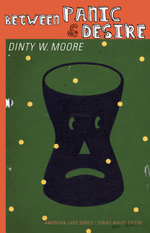 This is the first installment in a new feature where I ask a writer to recommend 6 books, old or new, sometimes according to some roomy guideline. In this case, I asked Dinty W. Moore, editor of Brevity and author of the memoir-in-essays, Between Panic and Desire, to recommend 6 memoirs. Here’s what he had to offer.
This is the first installment in a new feature where I ask a writer to recommend 6 books, old or new, sometimes according to some roomy guideline. In this case, I asked Dinty W. Moore, editor of Brevity and author of the memoir-in-essays, Between Panic and Desire, to recommend 6 memoirs. Here’s what he had to offer.
Narrowing my list of representative memoirs down to six was an agonizing task, because there are so many solid examples. To keep the undertaking manageable (barely), I’ve limited myself to the last twenty years or so, and instead of a ‘favorites’ list, I’ve chosen six examples that I think show the range of what memoir can do.
My concise description of memoir is “the truth, artfully arranged.” Now we can argue about the meaning of the word truth for weeks, but I’d rather not. I think – despite all of the weakness of memory (and for that matter, observation) – that sophisticated readers understand that the truth they are given in memoir is the author’s subjective truth. There is no hope of objective accuracy, nor would that be as interesting to read. But you go after your truth, with honest intent. That means that an author who is willingly, consciously subverting what he remembers is not writing memoir, by my definition. Cross that line, and you are writing fiction. Which is fine, but it is another project entirely.
So I’ve pulled these six memoirs down from my shelves to illustrate how a life can be presented artfully. Starting with:
This Boy’s Life, Tobias Wolff (1989): Wolff’s memoir is the first that I remember reading. I had read autobiography, of course, and long-form journalism, but Wolff’s brutally-honest, cinematic childhood memoir was the first to give me what previously I had only found in novels: the ability to escape into someone else’s life and another world, another time. Wolff wasn’t the first to write memoir in this way, but This Boy’s Life remains a touchstone to me and many other writers. I love the opening note to the reader: “I have been corrected on some points, mostly of chronology. Also my mother thinks that a dog I describe as ugly was actually quite handsome. I’ve allowed some of these points to stand, because this is a book of memory, and memory has its own story to tell.”
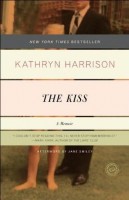 The Kiss, Kathryn Harrison (1997): Like many people, my first introduction to this book was the wave of denunciation that followed its release: denunciation of the author’s life (she engaged as a young woman in an incestuous relationship with her estranged father), and denunciation of the author’s decision to speak of it in this book. Thank goodness I eventually read The Kiss. Harrison’s restraint, her precision, her shocking honesty, and the chilling detail combine to create an unforgettable psychological portrait. Should victims remain silent? Hell no. (Random House is reissuing The Kiss next month.)
The Kiss, Kathryn Harrison (1997): Like many people, my first introduction to this book was the wave of denunciation that followed its release: denunciation of the author’s life (she engaged as a young woman in an incestuous relationship with her estranged father), and denunciation of the author’s decision to speak of it in this book. Thank goodness I eventually read The Kiss. Harrison’s restraint, her precision, her shocking honesty, and the chilling detail combine to create an unforgettable psychological portrait. Should victims remain silent? Hell no. (Random House is reissuing The Kiss next month.)
A Heartbreaking Work of Staggering Genius Dave Eggers (2000): Not my favorite book to read, frankly – it goes on too long in places, seems too clever by half in others – but Eggers shook up the form, opened possibilities, brought younger readers into the genre, and I tip my hat to him for the chances he took.
7 is holy like melt butter medium heat
1. Are you short? Well, bless your soul. Here’s a Short Review for you. All October like Alexandre Aja.
14. The Velvet Underground and Nico. Something. Sneeze. I never understand music.
9. 1926 Tao Lin silver dollar!
94. As I have said before, this flash contest will pay you in beer. Beer. Beer. This is why I keep saying it. Beer.
1117: I didn’t even know there was a wordstock festival. Should I have?
2. Duras:
Men like women who write. Even though they don’t say so. A writer is a foreign country.
17. Zines for sale on Etsy. Made by palm, finger, nail.
Inside Willie Wonka’s Chocolate Factory: McSweeney’s 33—Panorama

I’ve always likened McSweeney’s to Willie Wonka’s Chocolate Factory. Behind their magical doors are editors (OOMPA LOOMPA) who get to publish a quarterly literary magazine with a different, wildly imaginative concept each and every time and they have the means and reach to do almost anything they want. An issue as a direct mail concern? If you please. An issue as a box of cards? No problem. A hard cover book? Easy. A ridiculously large 8.5 lb. broadside? Why yes. Of course.
Leading up to its publication, there was a great deal of hype about McSweeney’s San Francisco Panorama—a- literary magazine cum newspaper printed in full color, that would offer a new perspective on the potential and possibilities afforded by the beleaguered newspaper. I ordered my copy of Panorama (a whopping $16 so not at all like a newspaper) and it arrived recently.
January 11th, 2010 / 4:35 pm
Max decided to go for a quick bike ride before dinner. He was going to tell his mom he was leaving, but then didn’t, oh well. She was busy with Gary anyway. Gary, her chinless boyfriend, was lounging on the couch, drinking red wine and watching one of those ludicrous musicals. Every night was some musical. Disgusting, untrue, wrong in every way.
first paragraph from an excerpt from the Where The Wild Things Are novel by Dave Eggers.
Rumpus “Long Interview with Dave Eggers”
 Seriously, that’s what it’s called and that’s what it is. Stephen’s talking to Dave about the latter’s new nonfiction book, Zeitoun. Here’s a taste. Click anywhere to get the full serving.
Seriously, that’s what it’s called and that’s what it is. Stephen’s talking to Dave about the latter’s new nonfiction book, Zeitoun. Here’s a taste. Click anywhere to get the full serving.
GIANT GUEST-POST: Tom Barbash “On Smugness”

On Smugness
by Tom Barbash
I often wonder how it all worked out for the couples who end up together in the last scenes of movies. What happened for instance to Elaine Robinson and Benjamin Braddock after they escaped onto the bus at the end of “The Graduate?”
Supposedly the scene was to end with them smiling in triumph, but they kept the camera rolling a few minutes longer. In the actor’s exhausted faces they found their ending, which was essentially: They’re in love, but the world is a mess, so now what?
June 19th, 2009 / 11:52 am
The Rumpus Long Interview with Dave Eggers, who I think is a charitable, talented guy. It’s sad that there’s such a pervasive Hate Eggers club out there, existing outside of artistic criticism.

